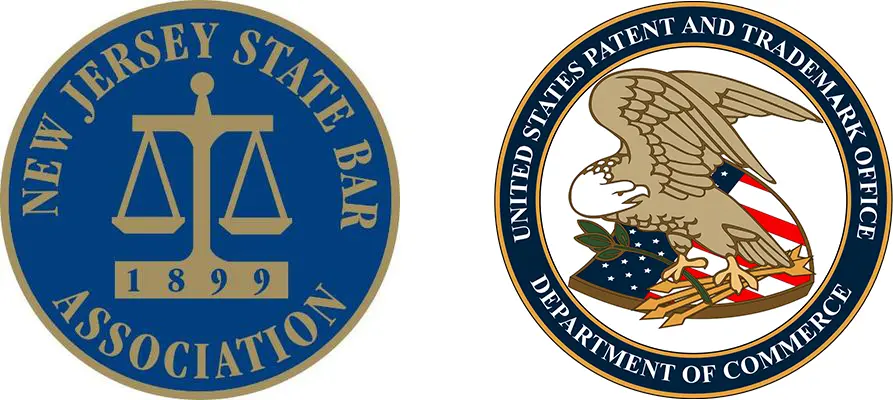Failure to Satisfy Section 112: H-W Technology, L.C. v. Overstock.com, Procedural Background and Indefiniteness Under Section 112 (Parts 2 and 3)
April 10th, 2015 by Thomas J GerminarioProcedural Background
We’re talking about H-W Technology, L.C. v. Overstock.com., Inc., 111 USPQ 2nd 1727 (Fed. Cir. July 11, 2014). Plaintiff H-W Technology (“H-W”) appealed from an order of the U.S. District Court for the Northern District of Texas granting summary judgment in favor of Defendant Overstock.com (“Overstock”). In its appeal, H-W challenged the District Court’s holding that claims 9 and 17 of its U.S. Patent No. 7,525,955 (“’955 patent”) are indefinite and therefore invalid under Section 112.
The ‘955 patent is directed to an app that enables a smartphone to receive offers from merchants and to complete transactions without having to generate a voice call. It contains 24 patent claims, consisting of three independent claims (Claims 1, 9, and 17) and 21 dependent claims.
In March 2012, Plaintiff filed this patent infringement action, and Defendant filed a counterclaim seeking a declaration that the ‘955 patent is invalid and unenforceable. In October 2012, Overstock notified H-W that claim 9, as issued, was missing a limitation. H-W obtained a certificate of correction from the PTO in May 2013 and subsequently submitted it to the District Court. In the meantime, the parties had completed their summary judgment and claim construction briefing. A few months later, the District Court construed the claims and granted summary judgment of invalidity, holding that claims 9 and 17 are indefinite. H-W Tech., LC v. Overstock.com. Inc., 973 F. Supp. 2d 689, 690 (N.D. Tex. 2013).
Indefiniteness Under Section 112
Under Section 112, paragraph 2 of the Patent Act, a claim must “particularly point out and distinctly claim the subject matter which the applicant regards as his invention,” or else, it’s indefinite and invalid. Halliburton Energy Servs., Inc. v. M-I LLC, 514 F.3d 1244, 1249 (Fed. Cir. 2008). The definiteness requirement of Section 112, paragraph 2 is intended to ensure that the claims “provide clear warning to others as to what constitutes infringement of the patent” Chisum on Patents, § 8.03, at 8-14 (2000).
A claim is presumed valid and is therefore only indefinite if it is “insolubly ambiguous, and no narrowing construction can properly be adopted.” Exxon Research & Eng’g v. U.S., 265 F.3d 1371, 1375 (Fed. Cir. 2001). Whether a claim is indefinite and therefore invalid is a question of law for the court. Amtel Corp. v. Info Storage Devices, Inc., 198 F.3d 1374, 1378 (Fed. Cir. 1999). However, “[t]o the extent there are any factual findings upon which a trial court’s indefiniteness conclusion depends, they must be proven by the challenger by clear and convincing evidence.” Technology Licensing Corp. v. Videotek, Inc., 545 F.3d 1316, 1338 (Fed. Cir. 2008).
A. Correction of Errors in Claims
“It is not [a court’s] function to rewrite claims to preserve their validity.” Allen Engineering, Corp., 299 F.3d 1336, 1349. While courts cannot “rewrite claims to correct material errors”, Energizer Holdings, Inc. v. Int’l Trade Comm’n, 435 F.3d 1366, 1370 (Fed. Cir. 2006), they do have the authority to correct “obvious minor typographical and clerical errors in patents.” Novo Indus., L.P. v. Micro Molds Corp., 350 F.3d 1348, 1357 (Fed. Cir. 2003). An error is correctable by a district court only where “the error is evident from the face of the patent.” Novo Indus., L.P., 350 F.3d at 1357. Even then, “[a] district court can correct a patent only if (1) the correction is not subject to reasonable debate based on consideration of the claim language and the specification and (2) the prosecution history does not suggest a different interpretation of the claims.” Id.
B. The Effect of a Certificate of Correction
Certificates of correction are governed by 35 U.S.C. § 254, which states:
Whenever a mistake in a patent, incurred through the fault of the Patent and Trademark Office, is clearly disclosed by the records of the Office, the Director may issue a certificate of correction… Every such patent, together with such certificate, shall have the same effect and operation in law on the trial of actions for causes thereafter arising as if the same had been originally issued in such corrected form. (Emphasis added)
Based on the plain language of the statute, Federal Circuit has specifically held that “the certificate of correction is only effective for causes of action arising after it was issued.” Sw. Software, Inc. v. Harlequin Inc., 226 F.3d 1280, 1294–95 (Fed. Cir. 2000).

